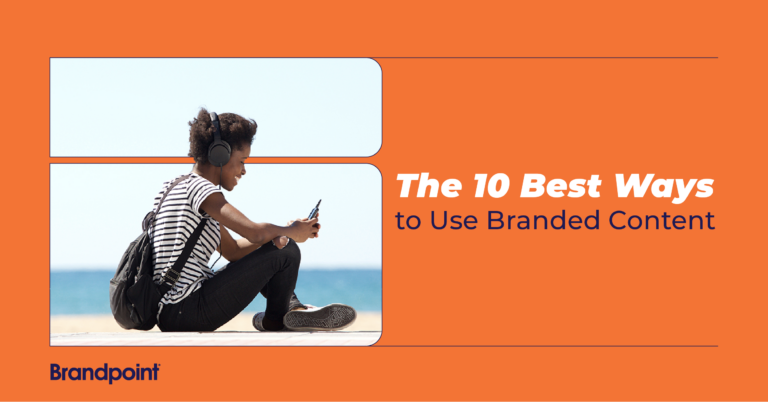Have you ever found yourself wishing you had the perfect message ready at just the right moment? Have you watched opportunities slip away because you weren’t prepared to communicate when the occasion called for it? If you’re determined to leave behind those missed chances and grasp every opportunity to engage with your audience, then you need an editorial calendar.
What is an editorial calendar?
Download the 2025 Holiday & Editorial Calendar Here
Why should you use an editorial and holiday planning calendar?
- Strategic agility. An editorial calendar empowers you to anticipate trends, breaking news and industry shifts. By strategically aligning your PR campaigns with these events, you showcase your brand’s adaptability and thought leadership, establishing a strong competitive edge.
- Consolidated resource. The editorial calendar serves as a consolidated hub for your PR team, fostering streamlined communication and efficient collaboration. This ensures everyone is on the same page, reducing misunderstandings and enhancing the overall quality of your campaigns.
- Enhanced storytelling. Utilizing an editorial calendar allows you to craft a cohesive narrative over time, gradually unfolding your brand’s story. This long-term perspective enables you to delve deeper into your brand’s values, philosophy and mission, fostering a deeper emotional connection with your audience.
- Targeted audience engagement. With the help of an editorial calendar, you can strategically target different segments of your audience through diverse themes, holidays and events. This tailored approach demonstrates your brand’s understanding of varying audience needs and preferences.
- Strategic alliances. An editorial calendar enables you to identify opportunities for partnerships and collaborations well in advance. By aligning your PR efforts with complementary brands or organizations, you can amplify your reach and impact, forging valuable strategic alliances.
- Brand consistency. Through consistent messaging and content creation, an editorial calendar helps solidify your brand identity in the minds of your audience. This consistency cultivates brand loyalty and fosters trust, positioning your brand as a reliable industry leader.
- Measurable success. An editorial calendar allows you to track and measure the success of your PR campaigns more effectively. By establishing clear goals and objectives for each campaign aligned with the calendar, you can analyze performance and make data-driven improvements.
- Maximized media coverage. By strategically timing your PR efforts in accordance with the editorial calendar, you increase your chances of capturing media attention. This optimal timing enhances your brand’s visibility and provides valuable opportunities for media coverage.
- Elevated crisis management. While largely focused on positive opportunities, an editorial calendar also aids in crisis management. By preparing responses and strategies for potential issues during specific events or holidays, you ensure your brand’s reputation remains intact even in challenging times.
- Innovation catalyst. Regularly engaging with an editorial calendar inspires creative thinking and innovation within your PR team. The structure it provides encourages brainstorming and the exploration of new ideas, leading to inventive and engaging campaigns.
What should your editorial calendar include?
An effective editorial calendar is the compass guiding your PR campaigns to success, ensuring that your messaging remains on track and your efforts are strategically aligned. To construct a comprehensive and impactful calendar, consider including:
Essential items:
- Key dates and holidays. The heart of your editorial calendar, this section should feature important holidays, events and industry-specific milestones relevant to your target audience. These dates will serve as the foundation for your PR campaign planning.
- Campaign themes and objectives. Clearly outline the overarching themes and goals for each campaign. This helps your team maintain focus and ensures that your messaging aligns with the desired outcomes.
- Content types and formats. Specify the types of content you plan to create for each campaign. This could encompass press releases, blog posts, videos, infographics, social media posts and more. Diversifying your content formats enhances audience engagement.
- Assigned responsibilities. Assign specific team members responsible for various tasks within each campaign. This accountability fosters a streamlined workflow and ensures that everyone knows their role in executing the plan.
- Distribution channels. Outline the platforms and channels through which your content will be distributed. This could include social media platforms, email newsletters, PR wire services and any other relevant channels for maximum visibility.
- Key messages and talking points. Define the core messages and talking points you want to convey during each campaign. These messages should align with your brand identity and resonate with your target audience.
Optional items:
- Content creation deadlines. Establish clear deadlines for creating and finalizing each piece of content. This proactive approach prevents last-minute rushes and ensures a polished and well-prepared campaign.
- Target audience segmentation. If applicable, segment your target audience based on demographics, interests or behavior. Tailoring your messaging to specific segments enhances relevance and engagement.
- Visual assets. Include a section for visual assets such as images, graphics, videos and infographics that will accompany your content. Compelling visuals enhance the overall impact of your campaigns.
- SEO keywords and optimization. Integrate relevant SEO keywords and optimization strategies to ensure your content ranks well in search engines and attracts organic traffic.
- Budget allocation. Detail the budget allocation for each campaign, including expenses for content creation, distribution, paid promotions and any other relevant costs.
- Performance metrics and analytics. Define the metrics you will use to measure the success of each campaign. This could include website traffic, social media engagement, media coverage, lead generation and more.
- Competitor analysis. Consider adding a section for monitoring and analyzing your competitors’ activities during similar campaigns. This insight can help you differentiate your approach and stay ahead in the competitive landscape.
The completeness and detail of your editorial calendar can greatly influence the effectiveness of your PR campaigns. Striking a balance between essential items and optional elements will empower your team to execute campaigns with precision, creativity and measurable impact.
Getting started with the editorial and holiday calendar
15 strategies for effective PR campaign planning
In the following sections, we’ll delve deeper into the strategic power of the editorial and holiday calendar, all while keeping an eye on the overarching goal: to harness the full potential of the editorial and holiday calendar and create PR campaigns that captivate your audience and elevate your brand.
1. Create thematic alignment across all channels
2. Drive your content creation strategy
- Storytelling. Each holiday or event carries its own unique story. As you create content, let the narrative of the occasion weave through your messaging.
- Varied formats. Don’t limit yourself to a single content format. Experiment with a diverse range of mediums, from articles and press releases to blog posts, videos, podcasts and interactive infographics. By offering varied content experiences, you cater to different audience preferences and enhance engagement.
- Authenticity and originality. While the editorial and holiday calendar provides themes, infuse your brand’s unique voice and perspective into your content. Showcase authenticity by sharing personal anecdotes, success stories or behind-the-scenes glimpses that resonate with your audience.
- Addressing pain points. Use the themes of holidays and events as a springboard to address challenges and pain points your audience may be facing. Position your content as a solution provider, offering insights and guidance that align with the occasion’s context.
- Emotional connection. Holidays and events often evoke strong emotions. Your content should mirror these sentiments, whether it’s joy, gratitude, reflection or motivation. Create an emotional connection that resonates with your audience on a profound level.
- Call to action (CTA). As you craft your content, integrate clear and compelling calls to action. Whether it’s encouraging readers to share their own holiday memories or inviting them to take part in a special event, an effective CTA drives engagement and interaction.
3. Be bold with visual appeal
4. Optimize your strategic distribution
5. Don’t forget about monitoring and refinement
6. Remain both consistent, yet flexible
- Consistency. Imagine you’re managing a cosmetics brand, and your editorial and holiday calendar highlights National Beauty Week. Your PR strategy includes a series of beauty tips, tutorials and product showcases aligned with this celebration. By consistently releasing content throughout the week, you establish a recognizable presence in your audience’s mind, reinforcing your brand’s expertise in the beauty industry.
- Adaptability. While planning is essential, being open to unexpected opportunities is equally crucial. Suppose a new beauty trend emerges during National Beauty Week, capturing the attention of your target audience. By swiftly adapting your PR campaign to include insights on this trend, you not only remain relevant but also demonstrate your brand’s agility and responsiveness.
7. Keep on eye on your long-term strategy
- Year-round engagement. Consider you’re managing a nonprofit organization focused on environmental conservation. By strategically aligning your PR efforts with various eco-centric holidays and events spread across the year, you create a consistent narrative of your commitment to the cause. From Earth Day to World Oceans Day and beyond, your long-term approach ensures that your messaging reaches its peak, driving awareness and action.
- Amplified story-telling. The editorial and holiday calendar isn’t confined to individual campaigns — it’s a tapestry of stories waiting to be woven. Imagine you’re a tech company launching innovative products throughout the year. By using the calendar to map out content around technology milestones, cultural celebrations and industry events, you craft a narrative that resonates with tech enthusiasts on a continuous journey of discovery.
- Reinforced brand identity. Over time, the editorial and holiday calendar becomes an integral part of your brand’s identity. Each holiday or event you align with reinforces your brand’s values, mission and connection with your audience. For instance, a pet food company leveraging National Pet Adoption Month and International Dog Day over the course of a year showcases not only their products but their dedication to animal welfare.
- Thought leadership. Long-term planning enables you to position your brand as a thought leader within your industry. Imagine you’re a financial institution using the editorial and holiday calendar to create an ongoing series of insights, tips and analyses. By aligning your content with financial awareness months and economic milestones, you establish your brand as a go-to source for valuable financial expertise.
8. Let your organization enhance collaboration opportunities
9. Cross-promote on your social media channels
- Building anticipation. Imagine you’re managing a coffee company gearing up for International Coffee Day. By integrating the editorial and holiday calendar into your social media strategy, you plan ahead to tease your audience with posts that hint at something special brewing. As the day approaches, you gradually build anticipation by sharing intriguing coffee trivia, behind-the-scenes glimpses of your roasting process and heartwarming stories of coffee enthusiasts around the world.
- Coordinated storytelling. Consider you’re overseeing a travel agency preparing for World Tourism Day. Through your social media strategy, you meticulously curate a series of posts that take your audience on a virtual journey. From captivating travel tales to breathtaking destination showcases, your posts create a seamless story that captures the essence of wanderlust and exploration.
- Captivating visuals. Visual content is the heartbeat of social media engagement. Leveraging the editorial and holiday calendar, imagine you’re managing a fashion brand ready to make a splash during Fashion Week. Your social media strategy involves crafting visually stunning posts that showcase your latest collection, paying homage to the spirit of creativity and style that the event embodies. The result? A captivating feed that resonates with fashion enthusiasts and invites them to join the runway of your brand’s narrative.
- Interactive engagement. Social media thrives on interaction, and the editorial and holiday calendar can spark conversations that resonate with your audience. Suppose you’re overseeing a tech company during National Cybersecurity Awareness Month. Through your social media strategy, you initiate discussions around digital safety, share practical tips to protect online privacy and invite your audience to share their own cybersecurity stories. This interactive engagement not only builds community but also positions your brand as a trusted advocate.
- Brand voice. The editorial and holiday calendar empowers you to maintain a consistent online presence while infusing your brand’s unique voice. For instance, if you’re managing a fitness brand, your social media strategy can align with Healthy Heart Month. Through a series of posts, you educate your audience about heart-healthy exercises, share heartwarming success stories and inject a touch of your brand’s motivational flair.
- Celebrating connection. Social media is a realm of connection, and the editorial and holiday calendar provides you with opportunities to celebrate shared values. Imagine you’re overseeing a food brand preparing for World Food Day. Your social media strategy revolves around spotlighting culinary traditions from around the world, showcasing diverse recipes that celebrate global flavors and fostering a sense of unity through the joy of food.






